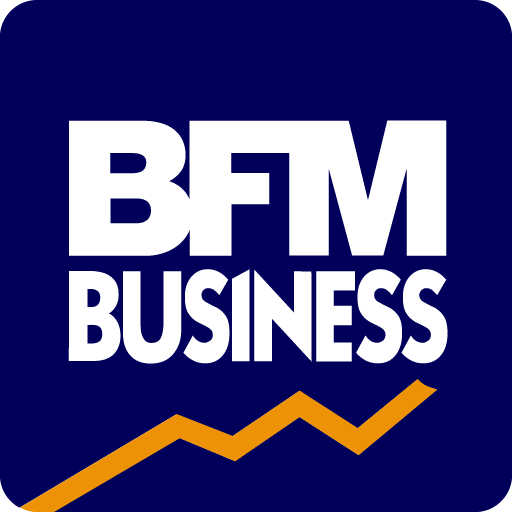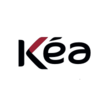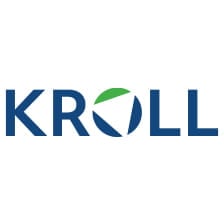Summary of our market study
The global hearing aid market, valued at $8.38 billion, is expected to reach $14.45 billion by 2026, with an average annual growth rate of 7.2%. This growth is driven by an aging population and the increasing prevalence of hearing impairment, with forecasts that by 2050, some 900 million people will suffer from such conditions.
The volume of hearing aid sales in the United States has increased by 67% in 11 years, and is expected to exceed 4 million units per year. The US import rate exceeds exports, with a coverage rate of 27.3%, indicating an upward trend in imports relative to exports. Major international trading partners include Mexico, Poland, Canada, China and Vietnam. The industry is also witnessing technological advances such as Bluetooth integration and 3D printing for customized devices, alongside regulatory changes towards OTC markets aimed at increasing accessibility and competition.
Expanding horizons in the US hearing aid market: a comprehensive demand analysis
Analysis of the US hearing aid market reveals several key trends that paint the picture of a booming sector. The American hearing aid consumer mainly opts for the RIC (receiver-in-the-canal) model, which dominates the market with around 72% usage, while BTE (Behind-The-Ear) models follow at a distant second, with around 13%. In the USA, men are significantly more likely to suffer from hearing impairment, with a significant proportion twice as likely as women to develop hearing problems, mainly due to increased exposure to noisy environments rather than genetic predisposition. Geographically, hearing impairment is a widespread problem in the USA, with states such as West Virginia reporting around 6% of their population affected, while California has only around 3%. The prevalence of hearing problems appears to be evenly distributed, with no region suffering disproportionately to others. The aging of the population is one of the main drivers of demand in this market. With around 48 million Americans suffering from some form of hearing loss, the segment most affected is that of people aged 65 and over.
Statistics show that around a third of people aged 65 to 74, and almost half of those over 75, report hearing problems. These figures have direct implications for market growth, with projections indicating that around 22% of US adults will be over 65 by 2050, compared with current figures of around 17%. Market demand is also influenced by wider societal factors and health-related causes, including infectious diseases, the use of harmful drugs, noise exposure and the aging process itself. Significant advances in Bluetooth technology and the use of 3D printing show that it is possible to meet consumer desires for more personalized, high-tech solutions.
In terms of market offerings, there is a notable diversity of brands and models, with RIC, BTE and fully in-channel (CIC) models leading the choice. As consumers prioritize sound quality, reliability and ease of use, brands such as Oticon, Phonak and Widex are at the forefront, offering devices that best match these preferences. In terms of expenditure, the industry shows some price differentials, with average unit costs ranging from around $800 to $2,200 for the various leading brands. The US market as a whole, valued at around $3 billion, is forecast to reach nearly $4 billion by 2023.
A look at the leading companies in the world of hearing aids, a few names stand out for their strong market presence, innovative offerings and trusted reputation.
The sector, which resembles an oligopoly, is led by six major players, often referred to as the "Big Six". These companies have carved out a dominant market share and play a decisive role in the future trajectory of hearing aid technology and affordability.
- Phonak Part of the Sonova Group, Phonak is a pioneering force in hearing aid innovation. Known for its exceptional sound quality and battery life, Phonak caters for a wide range of hearing impairments thanks to its diversified portfolio. Phonak's Audéo Marvel range is particularly renowned for its rechargeable technology and connectivity features that fit perfectly into modern lifestyles.
- Sonova Based in Switzerland, Sonova stands out as a world leader in the field of hearing care. As the parent company of Phonak, Sonova is respected for its commitment to research and development, constantly pushing back the boundaries of what is possible in hearing aid technology. Through sophisticated use of 3D printing, Sonova customizes hearing aids to each customer's unique needs, demonstrating the company's patient-centric approach.
- Oticon A champion of the "people first" philosophy, Oticon is another big name trusted by audiologists. Its product, Oticon Opn S, is acclaimed for its excellent sound quality. The company continues to impress with its innovative, elegant designs and its commitment to creating hearing aids that support a brain-oriented understanding of hearing.
- Widex Renowned for its quality and aesthetics, Widex is a brand that doesn't shy away from technological advances. Its EVOKE model demonstrates the company's commitment to delivering a superior sound experience through cutting-edge features such as machine learning-based customization of audio parameters. Widex's commitment to sustainable energy is also noteworthy, underlining its wider responsibility to the planet.
- ReSound Another key player, ReSound, highlights its heritage of setting hearing aid standards with its LiNX Quattro, among other models. The company prioritizes connectivity and user-friendly technology, enabling people with hearing loss to benefit from advanced features such as direct streaming and remote personalization.
- Signia Signia, formerly known as Siemens Hearing Instruments, has made a name for itself by focusing on performance and user comfort. Its Signia Xperience platform is packed with features that enable users to hear sound in all directions, delivering a natural listening experience that has been praised by users and the general public alike.
to understand this market
Detailed content of our market study
 Inforamtion
Inforamtion
- Number of pages : 35 pages
- Format : Digital and PDF versions
- Last update :
 Summary and extracts
Summary and extracts
1 Market summary
1.1 Definition and general presentation of the market
A hearing aid is a medical device aimed at correcting a hearing defect. The hearing aid market can be divided into two broader categories:
- STANDARDs to which the Behind-the-ear (BTE) and Receiver-in-the-canal (RIC) belong.
- CUSTOM or in-the-ear to which ITE, CIC, and IIC models belong.
The first modern hearing aid appeared in the beginning of the 20th century produced by Sonotone in 1929. Over the course of the last century, hearing aids have become portable and discreet, with the use of ever smaller and more efficient microprocessors since the late 1990s.
In the United States, professionals in this field are called audiologists and hearing aid specialists (hearing aid specialists).
The hearing aid market is expected to benefit by a number of demographic and social transformation affecting the global society. Specifically, within the US context, a progressive aging population, an increasing preventive medicine awareness, and technological innovations are projected to impact the hearing aid market.
1.2 The Global Market’s Rapid Growth
Source: ****
The global hearing aid market was valued at $*.** billion in **** and is anticipated to grow to $**.** billion by the end of ****. This is equivalent to a CAGR of *.*%. Key drivers for this increase in demand include an ageing population; indeed, older people pertain to the demography that is most likely to need hearing aid.
Moreover, in **** it is expected that around *** million people in the world suffer from hearing disabilities, caused by rising noise pollution levels, genetic factors, ear infections and other complications. [***]
Source: ****
Logically, in line with a past trend of growth in the market value of hearing aids, volumes sold have also grown. In ****, ** million units were sold around the world. Moreover, year on year growth from **** to **** was *.*%.
Again, global volumes growth is likely to increase due to two primary reasons: first, demographics are changing and by **** one in six people worldwide will be over **. [***]
1.3 The United States’ Growth Will Continue
Source: ****
According to FBI the market size for hearing aids in the US amounted to $*.** billion in ****. Moreover, the market is expected to grow at a CAGR of *% until ****, valuing it at $*.* billion. [***] Relatively to the world, this market value in **** of $*.* billion is equivalent to **.*% (***).
Moreover, there is a large potential upside to this market: according to apnews about one-third of Americans above ** years use hearing aid devices due to various reasons. The user penetration is limited by the very high cost of the equipment (***); if cheaper alternatives are introduced, the market is most likely to experience even higher growth.
Volume
Source: ****
In ** years, the volume of hearing aids sold have increase by **%. With regards to the previous graph on the US market size forecast, it is likely that this trend will apply to sales volumes as well, given that the two are closely related. We can thus expect volumes of hearing aids sold to be above * million in **** and the years following.
1.4 International Trade
UN Comtrade provides information on the exchange of goods or services among countries, in terms of value and volume. The following data is based on the code ****** labelled “hearing aids excluding parts and accessories”.
Source: ****
The coverage rate is calculated by dividing exports by imports. From this, we can conclude that the United States imports more hearing aids than they export. In **** the value was **.*%. This follows by the fact that components and models are assembled and manufactured in other countries such as Vietnam, Canada, China, and the US. [***] Moreover, this trend is increasing, as we can see from a higher coverage rate in **** compared to ****.
Source: ****
The United States’ main export recipients of hearing aids are Mexico (***).
Source: ****
The United States’ primary countries from which it imports are Mexico and Poland (***).
2 Demand analysis
2.1 Profile Analysis: The American Consumer
This section’s goal is to highlight and analyze consumer behavior patterns in the United States. Moreover, it breaks down demographics and which hearing aid products American consumers seek. Finally, it looks at trends which have, and will, shape the US market for hearing aids.
Receiver in the canal (***) dominates
Source: ****
There are different models and types of hearing aids; the most commonly used in the US is the RIC (***)
Geography
Source: ****
The state with the largest fraction of hearing impaired is West Virginia; around *.*% were suffering in ****. In the state of California, the equivalent number was around *%. From this graph it is clear that no region or cluster in particular in the US is suffering from hearing impairment. In other words, the problem is spread throughout the country.
Men overrepresented
Finally, it is important to note that men in the United States are at much larger risk than women to suffer from hearing impairments; according to the State of Hearing Report ****, in the age group **-**, men are twice as likely to experience issues compared to women. This is not biologically related, but rather due to the fact that men are more exposed to noisy environments.
2.2 Demand Trends
Ageing Population
In the United States, around ** million people suffer from some sort of hearing loss. Naturally, older adults make up the largest segment of these people. Around one third of people aged between ** and ** report problems with their hearing. When considering people at the age of **, this number increases to about half. [***]
Source: ****
The hearing impairment amongst adults is likely to increase in aggregate numbers, since the population of the United States is ageing. Indeed, as can be seen from the graph above, in **** it is expected that **% of adults are aged above **, up from today’s value of around **%. Consequently, the demand for hearing devices will most likely continue to increase in the long run as well.
The Causes for Hearing Impairments
The most common causes for hearing loss adults are:
Infectious diseases [***] Harmful Medications Noise Exposure [***] Aging [***]
In other words, these four factors can be of relevance when considering where the market is heading.
3 Market structure
3.1 Market Structure - Manufacturers
The market for hearing aids in the US is similar to an oligopoly; in **** around **% of the market was captured by six players, a figure which hasn’t changed much until today [***]. The “Big Six“ include Phonak, Sonova, Oticon, ReSound, Signia, and Widex. In other words, entry barriers are high, and it is hard for smaller players to capture market share. One reason for this is the fact that the industry is heavily reliable on large R&D expenditures, which makes it difficult for smaller firm with less liquidity to enter the market. Below follows a breakdown of the most used brands by audiologists, highlighting the dominance of the six largest brands.
Source: ****
From this graph we can see that Sonova as a company is dominating the products sold and thus brand confidence. Together, they have three products on the market which was redistributed on average **% of the times by audiologists.
3.2 Market Structure - Distribution
In general, two categories of professionals can distribute hearing aids: audiologists and hearing aid dispensers. The former requires four year of graduate school, and the latter requires high school graduation and a six-month training program. Consumers buy hearing aid from hospitals or retail clinics in department stores, which range from small private vendors to large chain stores. [***]
Private vs Department of Veteran Affairs (***)
In ****, **.*% of sales of hearing aids were through the Department of Veteran Affairs. Consequently, the remaining **.*% were distributed privately. [***] The same source reports that both channels are experiencing growth: the private sector had average sales growth of *.*% in the ten years preceding **** and *.*% in the last five. Moreover, the VA grew *.*% and *.*% respectively.
Below follows a breakdown of how the private selling of hearing aids is distributed.
Source: ****
The top six non-independent distribution channels included in this list account for **% of sales (***). This implies that the distribution of the retail of products by private players is fragmented. Indeed, small chains and independent distributors account for over **% of the market share. Independent channels are defined as not being part of a hearing aid manufacturer that is company-owned or franchised. Again, this goes to show that the distribution channels are ...
4 Analysis of the offer
4.1 Types of hearing aid
Components which are common to all hearing aid devices include: a microphone (***).
As mentioned, one can decompose hearing aids into two macro categories – Customs and Standards. An additional distinction can be made based on the position of the aid. The picture below shows three different typologies:
In the same order as the one displayed on the image:
BTE (***): Behind-the-ear hearing aids are placed behind the ear and channel sound into the ear canal via a thin, transparent tube connected to a custom-made earmold. RIC (***): RICs hearing aids use a thin plastic tube that extends from behind the ear into the ear canal. ITE (***).
The choice of prostheses by the patient depends on several factors obtained through medical diagnosis - performed via an audiogram - and the discussion between the doctor and the patient. The determining criterions are:
- The intensity of hearing loss
- The need for discretion
- The patient's ability (***)
- The patient's lifestyle
- The patient's budget.
Below we further dissect the different models of hearing aids and provide an overview of the different attributes.
Source: ****
As we saw in section two, the most commonly used model is the RIC, followed by BTE and CIC.
4.2 What hearing aid attributes are in demand?
Source: ****
The above graph shows what attributes are sought after when audiologist select hearing aid for patients. Respondents were asked to give a score between zero to ten, where ten signifies the highest perceived priority, and one is the lowest importance. From this graph, it is evident that the respondents value sound quality above other qualities. Moreover, reliability and ease of use are also highly valued. On the bottom of the spectrum we find branding; in other words, the audiologists interviewed value product quality not necessarily based on the reputation of the manufacturer but the actual attributes of the device in question.
4.3 Product Comparison
Below follows a comparison of which brand performs the best in several categories, based on answers from a sample of audiologists. The criterions chosen are based on the three most prioritized attributes (***) from the previous graph. A remark regarding this comparison is that, although the brands included in the analysis below account for **% of the market value, they make up the premium segment of hearing aids. Hence, lower cost hearing aid devices are not covered here.
Source: ****
When asked about sound quality, Oticon is the clear favorite, capturing **% of respondents vote. Phonak places second (***).
Source: ****
When it comes to battery life, Phonak (***).
Source: ****
Finally, Phonak is also regarded to be the best value for money brand, with (***).
4.4 Price Comparison
Source: ****
4.5 Supply Trends
Bluetooth on the rise
Technological evolution in the past three years include the increasing popularity of Bluetooth technology and advanced digital platforms for better performing hearing aids. [***]
*D printing
*D printing is used in hearing aids to create increasingly customized models. For instance, this technology can be used to adapt the equipment to a client’s ear canal and degree of hearing loss. *D printing is starting to gain traction amongst producers; Sonova for example uses advanced *D printing technology to produce customized hearing aid devices, where models such as EnvisionTEC’s E-Shell *** Series and E-Shell *** *D Printer Material series are included in the product portfolio.
Hearing aid price bubble?
Audicus states that “in the last decade the price of an average Behind-the-Ear (***)
5 Rules and regulations
5.1 Current Regulation
Federal level
According to the American Speech-Language-Hearing Association (***), any potential hearing aid user must provide the distributor with the following information a written statement by a medical officer that the patient has been medically examined and is a candidate for a hearing aid. This examination must take place within * months that before the date of purchase of the hearing aid. The doctor will then refer to an audiologist or hearing aid specialist. to the patient. Nevertheless, distributors are restricted in their advertising and cannot make claims about addressing hearing loss. [***]
State level
California, Florida, Missouri, Texas, and other states have specific restrictions on the marketing of hearing aids in relation to the requirements of the FDA.
5.2 Future Regulation
The WHO restates the fact that hearing aids can only be distributed by licensed professionals. However, technological advances have facilitated hearing aid which can be self-fitted. For example, with older analogue hearing aids, calibrating and properly fitting a hearing aid could involve crafting a custom ear-mold to minimize audio feedback and manually adjusting sound levels, but regulatory models in most countries preclude such devices from being sold directly to patients. Nevertheless, the United States are leading the way in making such products more accessible to the public which will be implemented through regulated OTC markets. A key feature of this legislation is that the Food and Drug Administration will define explicit performance and labelling criteria this year (***) to ensure that hearing aids purchased over the counter are both safe and effective. Essentially, this would increase competition in the market, which, as we’ve seen previously, is dominated by six players.
6 Positioning of the actors
6.1 Segmentation des acteurs
- Oticon
- WS Audiology (Widex Sivantos)
- ReSound (GN Hearing)
- Signia
- Starkey
- Amplifon
- Beltone (GN hearing)
- GN Hearing
- Demant groupe
All our studies are available online in PDF format
Take a look at an example of our research on another market!
 Choosing this study means :
Choosing this study means :
Access to more than 35 hours of work
Our studies are the result of over 35 hours of research and analysis. Using our studies allows you to devote more time and added value to your projects.
Benefit from 6 years' experience and over 1,500 industry reports already produced
Our expertise enables us to produce comprehensive studies in all sectors, including niche and emerging markets.
Our know-how and methodology enable us to produce reports that offer unique value for money.
Access to several thousand articles and paid-for data
Businesscoot has access to all the paid economic press as well as exclusive databases to carry out its market research (over 30,000 articles and private sources).
To enhance our research, our analysts also use web indicators (semrush, trends, etc.) to identify market trends and company strategies. (Consult our paying sources)
Guaranteed support after your purchase
A team dedicated to after-sales service, to guarantee you a high level of satisfaction. +44 238 097 0676
A digital format designed for our users
Not only do you have access to a PDF, but also to a digital version designed for our customers. This version gives you access to sources, data in Excel format and graphics. The content of the study can therefore be easily retrieved and adapted for your specific needs.
 Our offers :
Our offers :
The Hearing Aid Market | United States
- What are the figures on the size and growth of the market?
- What is driving the growth of the market and its evolution?
- What is the positioning of companies in the value chain?
- Data from several dozen databases
5 reports pack (-15%) USA United States
- 5 reports at €75.6 excluding VAT per study to choose from our American catalogue for 12 months
- Save 15% on additional studies purchased
- Choose to be refunded any unused credit at the end of the 12-month period (duration of the pack)
See the terms and conditions of the pack and the refund of unused credit.


















